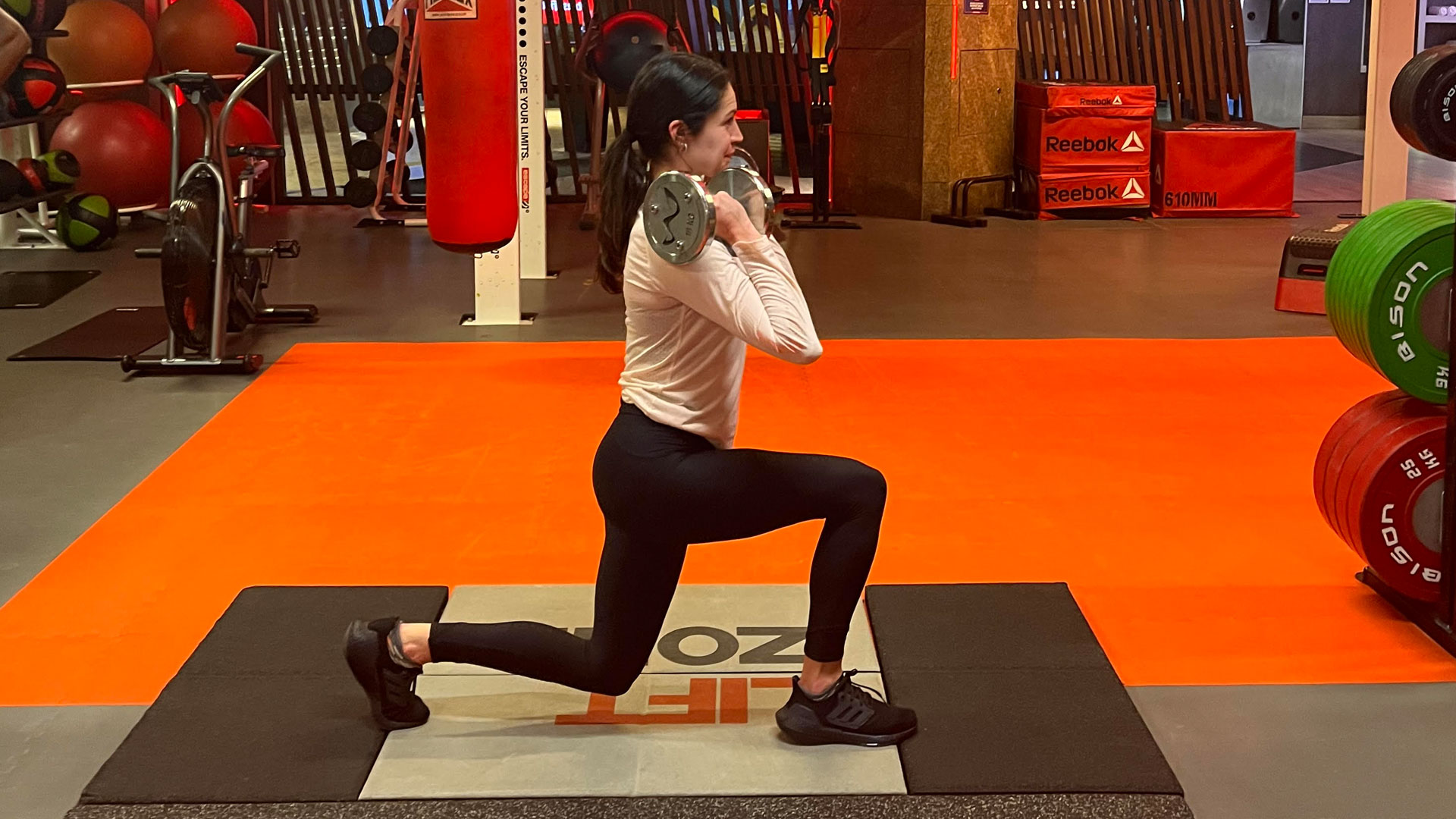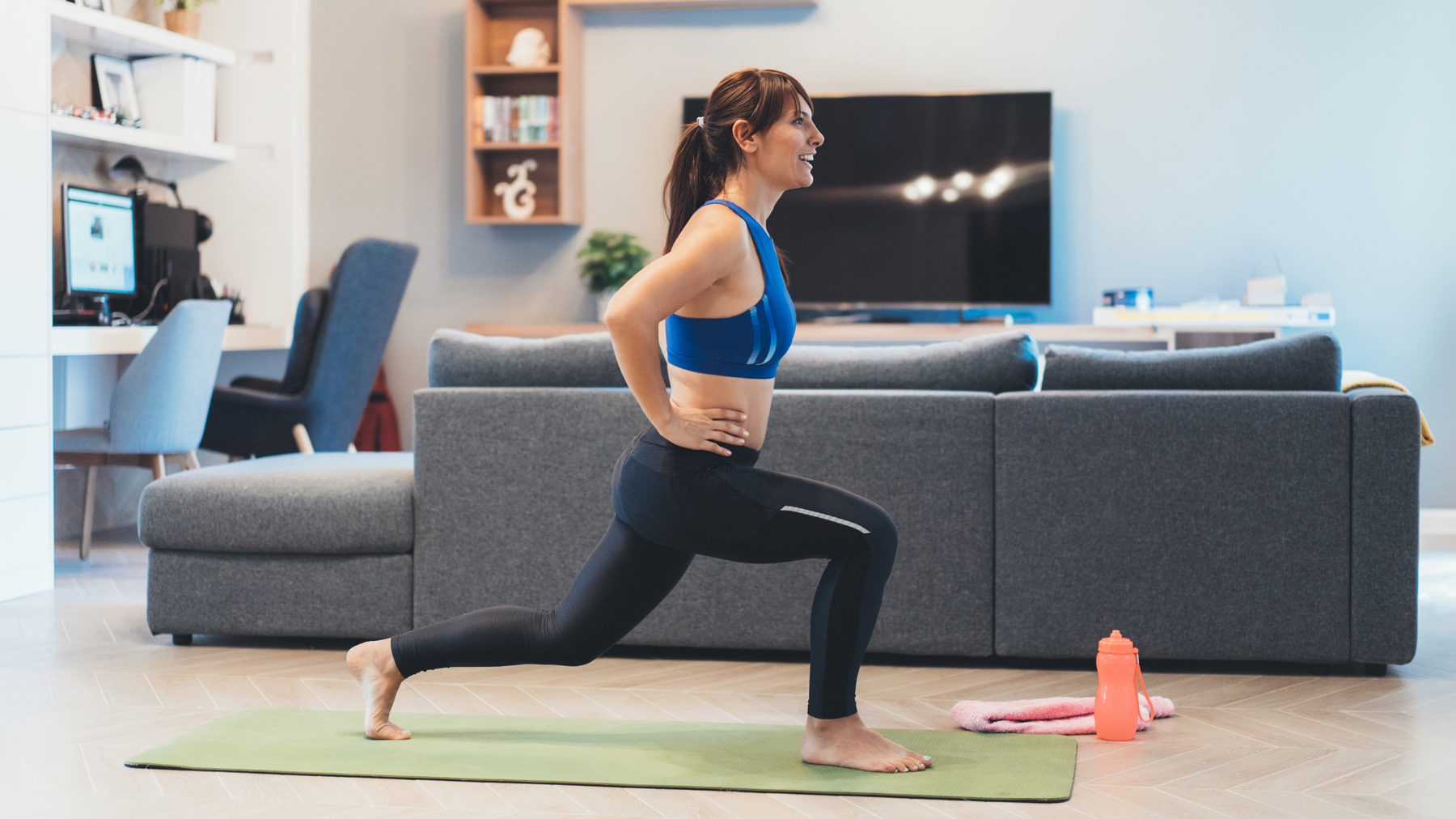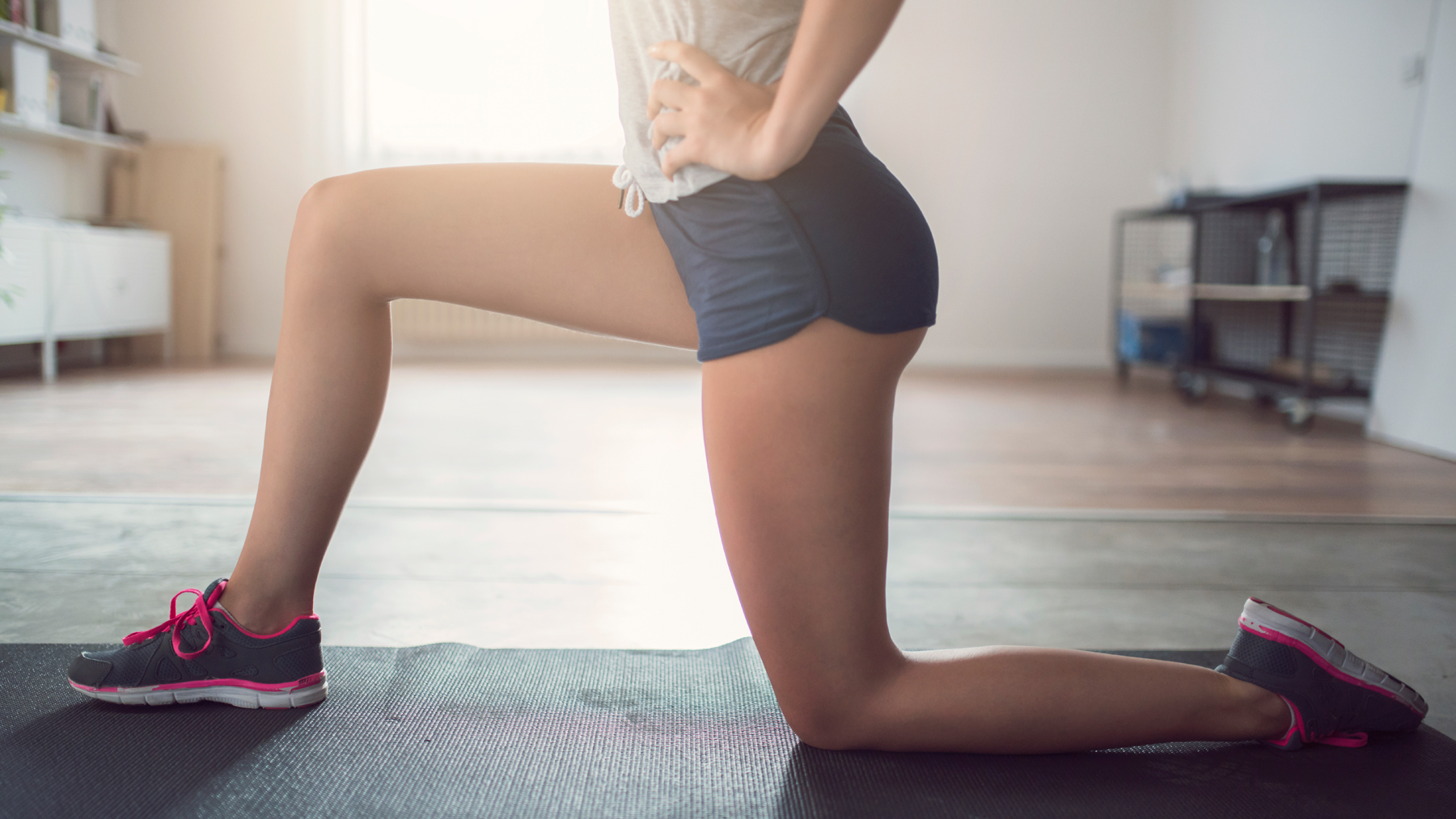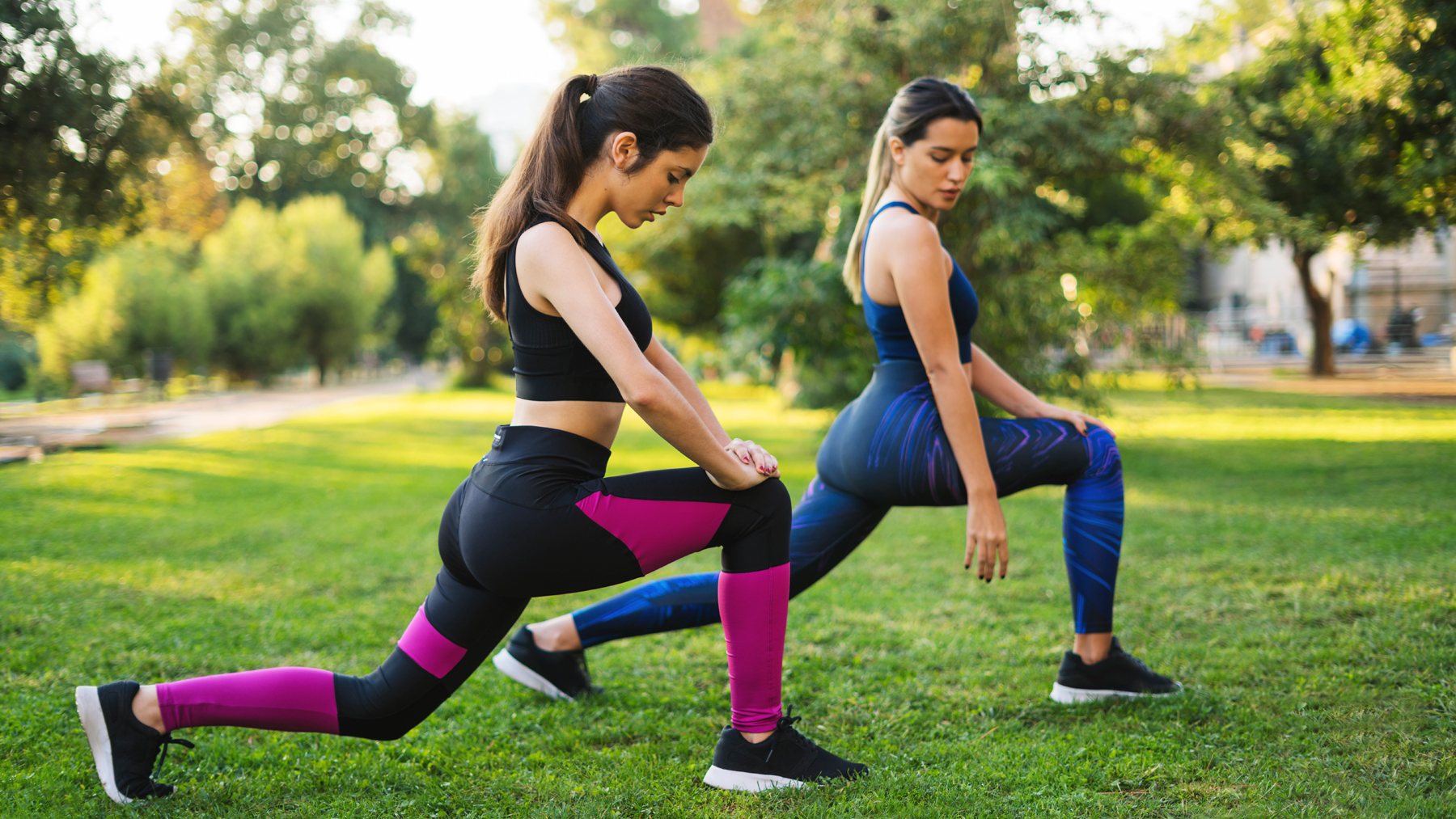I did 100 lunges a day for a month and the results were interesting
Doing 100 lunges a day left me with a perky butt, among other things


You’ll no doubt be familiar with the lunge, and you may often include them in your workouts. I for one am a big lunge lover, so when I decided to do 100 lunges a day for a month, I was excited about the challenge.
My workouts generally involve a lot of running, plenty of weights, and the odd bit of boxing. It’s a mixed bag of movement, so incorporating 100 lunges into my routine didn’t seem too daunting. In fact, surely it couldn’t be as arduous as the 500 squats a day for two weeks challenge I took on in 2021?
Well, I’ll fill you in on my 100-lunges-a-day discoveries soon. But first, in case you’re unsure, what is the best, and most effective way to perform a lunge?
If you are focusing on a classic forward lunge, it’s best to start standing upright, with feet hip-width apart. Keep your back flat and core engaged as you step forward with your left leg and drop down so that the front knee is bent, with the knee stacked above the ankle, and the back knee hovering just above the ground. Then push up through the front heel to rise and repeat on the other side. You can either do lunges using your bodyweight or you can invest in the best adjustable dumbbells or kettlebells to challenge yourself.
The beauty of lunges is that there are various different types; reverse lunges, curtsy lunges, split lunges, side lunges, walking lunges; you name it, there’s a lunge for it. If you need guidance, check out this guide on how to do lunges. Plus, lunges can be done with your own bodyweight, or with other resistance such as dumbbells, barbells, and kettlebells.
For my challenge, the rules were fairly simple. I had to do 100 repetitions of any lunge I wanted, every single day, for a month.
So, without further ado, this is what happened….
Start your week with achievable workout ideas, health tips and wellbeing advice in your inbox.

Lucy is an experienced freelance fitness journalist who loves to eat, sleep and breathe all that she writes about. When she isn't at her desk Lucy is a Level 3 personal trainer, hence why we love having her try out and share her results from the latest fitness trends and challenges.
100 lunges a day challenge: what to expect
I noticed an imbalance in my body
Lunges work one side of the body at a time; they’re a unilateral move. Unilateral moves are brilliant for boosting balance, something we need for general day-to-day movement.
Previous injuries and a lack of releasing tension using one of the best foam rollers have left my right side slightly weaker than the left. So when practicing a right leg forward lunge, I was a little less stable than when I went in for a left leg forward lunge.
This was more noticeable when I was doing lunges with weights. Although lunges and other unilateral moves such as step-ups and single arm dumbbell rows are great for noticing an imbalance/weakness in one side of the body, they’re also useful to help correct an imbalance.
As a PT, I recommend people start lunges with the weaker side, and focus more heavily on this side, in order to correct it. If adding weight, the weight should be dictated by how it feels on the weaker side.

My knees, oh my knees
Doing 100 lunges a day might not seem too crazy but when you do them every day for one month and one knee is already a little bit scuppered from endless exercise sessions, then the lunges quickly do start to hurt. It wasn’t an unbearable pain but I just noticed more twinges particularly in my right knee, the dodgy knee as I call it.
The pain was most prevalent during forward lunges, so if you’re also someone who is prone to knee pain, opt for reverse lunges.
I felt every single lower body muscle working
If there’s a real blow-out benefit of the lunge, it’s that thanks to a multitude of different varieties, you really can target every muscle in the legs.
This is great as lower body strength is vital for so much of what we do in life from day-to-day chores to taking the stairs.
The forward lunge places a greater emphasis on the quads - the muscles that cover the front of the thigh, whilst the reverse lunge, where a back step is taken rather than a front step, focuses more heavily on the glutes (butt muscles) and hamstrings; muscles that run along the back of the thigh.
All lunges place a focus on the calf muscles; these run along the back of the lower leg.
Curtsy lunges; another brilliant variation where the back leg steps behind the other leg and drops down into a lunge, is great at focusing even more on the glute muscles.
The forward walking lunge (where lunges are done in a walking motion, moving forward) specifically has been praised as studies have found these to be useful in boosting run speed and preventing muscle injuries.

My glutes felt it
So, as reverse lunges are my favorite of the lunge ‘collection’, it was only fitting that my glutes were impacted the hardest.
I didn’t really think they’d be affected but actually, I am convinced my butt looked perkier than usual.
There’s research that points towards lunges being a key exercise in activating the Gluteus Maximus. This is one of the three muscles that make up our glutes, and is responsible for hip extension, such as when you take a step back.
Activating this muscle is so important to help avoid injuries as when it’s fired up and alert, it takes much of the strain when you move and exercise.
If it’s left half asleep, then other muscles have to take the strain, which can lead to pain.
My sprints felt easier
OK, so this might have been in my head, but as the month of 100-lunges-a-day came to a close, I am convinced that my sprints were faster than usual, whilst also being more stable.
Sprinting does require balance as well as serious lower body power, and as the study above proved, forward lunges could help with running speed.
The lower body strength I gained from lunging as well as the agility benefits I reaped (and yes there’s a study to back this up too), must have made a real difference.

Four tips for the perfect lunge
As a personal trainer, I am forever spotting people making little errors with their lunges. Although they might seem minor, over time they can lead to injury and pain. For the perfect lunge, make sure you:
- Avoid letting your front knee slip further forward than your front toes. Instead, keep it stacked above the ankle. This does mean ensuring your steps are the right width to allow a 90-degree angle in the knee, without the knee falling too far forward.
- Keep your back flat. It’s easy to let your lunge form slide and for your back to start hunching. Avoid this and always focus on pressing your chest forward and engaging with the back and core muscles to keep your torso flat.
- Push through your front heel to rise. This way, force comes through the glutes, the largest muscle in the body, and there is less pressure on joints such as the knee.
- Don’t add too much weight, too soon. If you’re upgrading from bodyweight to weighted lunges, take it easy. Increase the weight gradually and do so when you feel comfortable with your form.
George Hill is an HCPC registered podiatrist specializing in sports and exercise and the impact they have on our lower limbs. During his career, George has built a wealth of experience helping patients with lower limb conditions, bio-mechanical problems, and providing expert advice for better foot health.
Lucy is a freelance journalist specializing in health, fitness and lifestyle. She was previously the Health and Fitness Editor across various women's magazines, including Woman&Home, Woman and Woman’s Own as well as Editor of Feel Good You. She has also previously written for titles including Now, Look, Cosmopolitan, GQ, Red and The Sun.
She lives and breathes all things fitness; working out every morning with a mix of running, weights, boxing and long walks. Lucy is a Level 3 personal trainer and teaches classes at various London studios. Plus, she's pre- and post-natal trained and helps new mums get back into fitness after the birth of their baby. Lucy claims that good sleep, plenty of food and a healthy gut (seriously, it's an obsession) are the key to maintaining energy and exercising efficiently. Saying this, she's partial to many classes of champagne and tequila on the rocks whilst out with her friends.